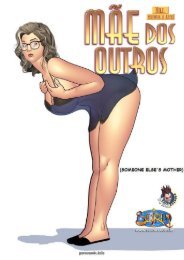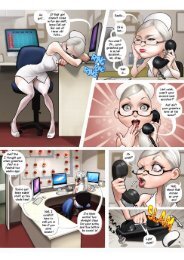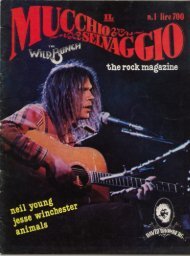AmericanCinematographer201201
You also want an ePaper? Increase the reach of your titles
YUMPU automatically turns print PDFs into web optimized ePapers that Google loves.
◗ Animal Instincts
Camera
operator Mitch
Dubin captures
battlefield
close-ups of
Albert and his
friend from
Devon.
SuperTechnocrane mounted on a
Bickers 4x4 Taurus Quad. “Steven really
loves the Technocrane,” Kwiatkowski
notes, “and we did a lot of elaborate shots
with just the arm.” The production also
used a MovieBird 20 from Alpha Grip,
carried by a Bickers camera car.
The cranes were often outfitted
with Scorpio Stabilized Heads. “That
was the trick, because those heads
enabled us to do some longer-lens shots
with great stability,” says Kwiatkowski.
“That worked really well on the cavalry
charges not only for technical reasons,
but also because the camera’s stability
showcased the natural energy of the
horses.”
Another indispensable tool was
the Russian Arm, which was used to
track alongside galloping horses.
Equipped with a gyrostabilized Flight
Head and offering 360-degree panning
capability, the remote arm rode atop a
Stealth high-speed tracking vehicle, and
it could get quite close to the horses.
“The horse trainers had worked with
that vehicle before, so they knew what
they could and couldn’t do,” says
Kwiatkowski.
The Russian Arm’s speed and
handling were put to the test in a scene
showing Joey’s flight through the woods.
The production cleared a 400-yard
stretch of terrain for the liberty horse
(one without a rider) and picked out
a parallel path for the Stealth.
Thoroughbreds can accelerate to full
speed within a couple of strides, but the
Stealth had to carry four people plus
crane and camera. “The driver had one
foot on the gas pedal, all the way down,
and one foot on the brake at the same
time,” says Dubin. “When the horse
took off, the driver just took his foot off
the brake. The horse could be at full
speed within seconds! It was really
thrilling.”
Some rigs were custom-designed,
occasionally at the last minute. One
example was something used for
“Cannon Hill,” a scene that shows Joey
and other horses struggling to haul a
cannon up a steep hill. After the previs
was scuttled because of safety concerns,
Spielberg planned another elaborate
shot that moved from the bottom of the
hill to the top — a 15-percent grade.
Kwiatkowski explains, “The shot starts
out a bit wide, and then suddenly a character
comes in close. The camera drops
down to catch the soldier’s feet, and then
we go by the big wheel of the cannon
trailer. We come back up, see the horses
and all the soldiers, and then go up to the
German commander, and now it’s a
close-up again. That’s what Steven does
best: tell the story with the camera.
Characters come in and out all in one
take that lasts about 45 seconds.
“When Steven described the shot,
I knew where I had to put the camera,
but I didn’t know how to do it,” he adds.
Spielberg wanted to use a Bickers
Racing Quad with the Steadicam, but
the team eventually determined that the
hill was too steep, and the weight on the
back of the quad would be too great. So
the grips borrowed a page from the
special-effects team, which was planning
to haul the cannon up with a 10-ton
winch buried between I-beams.
Kwiatkowski built his own winch parallel
to theirs on a lesser grade. This was
cinched to the Bickers 4x4 Taurus,
which carried the Technocrane. “We
were able to level the crane and pulled
that vehicle up with the winch in coordination
with the special-effects crew
bringing up the cannon,” says
Kwiatkowski. “After four takes, we got
the shot. It was pretty intense.”
In contrast to the grips’ huge arsenal,
the production’s lighting package
was relatively modest, according to
Devlin. At its core were five ArriMax
18Ks. “We’d use all those lights every
day, on every setup,” says Devlin. “When
we ran out, we were out! Our lighting
package wasn’t very big at all compared
to, say, Indiana Jones and the Kingdom of
the Crystal Skull.”
The HMIs were deployed even
on sunny Devon exteriors.“The Devon
scenes are meant to suggest innocence,
the beginning of Albert and Joey’s
friendship, so the lighting is more idealized,”
says Kaminski. “I wanted deep
blue skies with white clouds, so I used a
daylight stock and frontlit the actors so
they’d stand out and look glorious
56 January 2012 American Cinematographer













